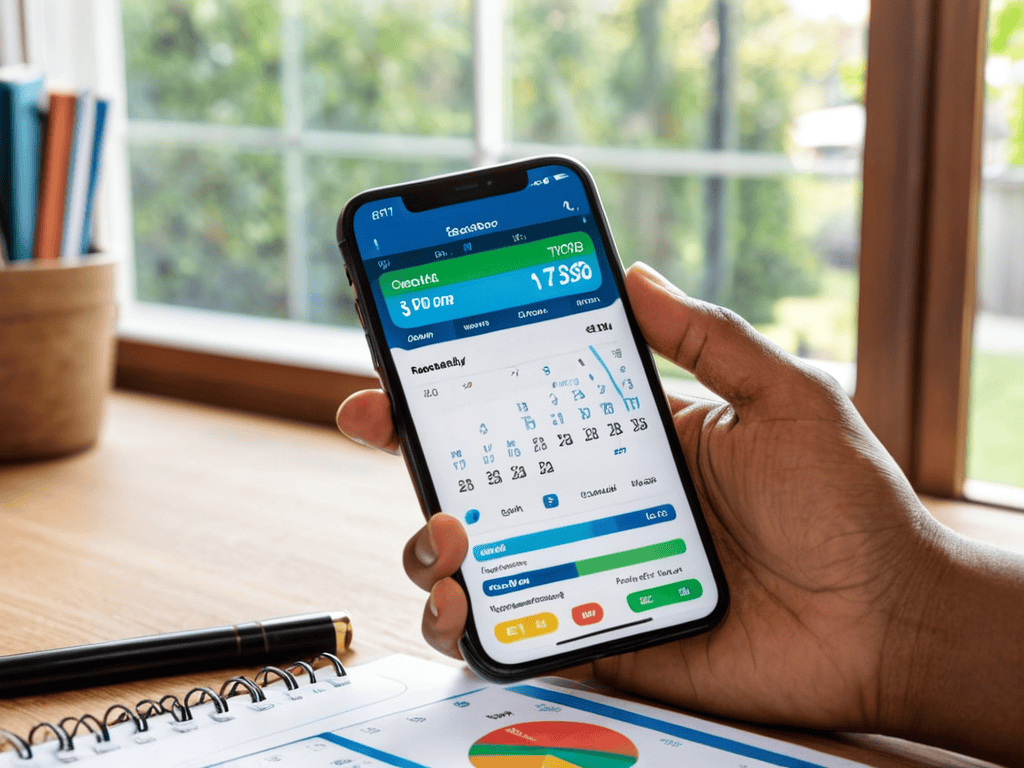I still remember the day I had to debug my own financial code, so to speak, and tackle my credit card debt head-on. It was a daunting task, but I soon realized that getting out of debt wasn’t about being a financial wizard; it was about following a step-by-step guide to getting out of credit card debt. The problem is, most of us have been led to believe that escaping debt is a complex, algorithmic puzzle that only a few can solve. But trust me, it’s more like a logical sequence of events that, with the right mindset and tools, anyone can master.
So, what if you could recalibrate your financial framework and start fresh? This article will provide you with a no-nonsense, step-by-step roadmap to help you overcome credit card debt. You’ll learn how to prioritize your expenses, negotiate with creditors, and create a budget that actually works. My goal is to empower you with the knowledge and skills to take control of your finances, and by the end of this guide, you’ll be well on your way to decoding the secrets of debt-free living.
Table of Contents
- Guide Overview: What You'll Need
- Step-by-Step Instructions
- Escape Credit Card Debt
- 5 Byte-Sized Tips to Hack Your Way Out of Credit Card Debt
- Puzzle Pieces to Financial Freedom
- Paying Off Debt: The Ultimate Tech Challenge
- Breaking Free from Credit Card Debt: The Final Byte
- Frequently Asked Questions
Guide Overview: What You'll Need

Total Time: several months to several years
Estimated Cost: varies depending on debt amount and interest rates
Difficulty Level: Hard
Tools Required
- Budgeting Software (e.g., Mint, You Need a Budget)
- Spreadsheet (for tracking expenses and debt payments)
- Calculator (for calculating interest rates and payoff periods)
Supplies & Materials
- Credit Report (to identify all debts and creditors)
- Debt Repayment Plan (to outline strategy and timeline)
- Envelope System (for categorizing and tracking expenses)
Step-by-Step Instructions
- 1. First, let’s get real about our debt situation – take out all your credit card statements, and let’s make a list of the balances, interest rates, and minimum payment due for each card. This will be our financial map, helping us navigate the debt landscape and identify which cards to prioritize first.
- 2. Next, we need to stop the bleeding – avoid using your credit cards altogether until you’ve paid off the debt. This means cutting back on non-essential expenses and finding ways to reduce your spending. Consider implementing a cash diet, where you use cash for discretionary spending to help stick to your budget.
- 3. Now, it’s time to consolidate and prioritize – sort your credit cards by interest rate, with the highest rate first. This will help you focus on paying off the cards that are charging you the most interest. You can also consider consolidating your debt into a single loan with a lower interest rate, but be sure to read the fine print and understand the terms before making any decisions.
- 4. The next step is to create a budget that works for you – take a close look at your income and expenses, and make a plan for how you’ll allocate your money each month. Be sure to include a debt repayment fund in your budget, and try to put as much money as possible towards your debt each month.
- 5. It’s time to negotiate with your creditors – reach out to your credit card companies and see if they can offer you any assistance, such as a temporary reduction in interest rates or fees. Be polite, persistent, and prepared to make a case for why you need help – and don’t be afraid to think outside the box when it comes to finding a solution.
- 6. Now, let’s automate your payments – set up automatic payments for each of your credit cards, and make sure you’re paying more than the minimum due each month. You can also consider setting up a bi-weekly payment plan, where you pay half of your monthly payment every two weeks – this can help you pay off your debt faster and reduce the amount of interest you owe.
- 7. Finally, it’s essential to track your progress – keep a close eye on your debt balances, and celebrate your successes along the way. Consider using a debt repayment spreadsheet or app to help you stay on track, and don’t be afraid to seek support from friends, family, or a financial advisor if you need help staying motivated.
Escape Credit Card Debt

As you navigate the path to financial freedom, it’s essential to understand the impact of credit score repair after debt on your overall financial health. This process can be likened to debugging a complex software program – you need to identify and fix the errors to get the system running smoothly again. By focusing on making timely payments and reducing debt, you can start to rebuild your credit score, which is crucial for securing better loan terms and lower interest rates in the future.
When it comes to tackling debt, there are two popular methods: the debt snowball method and the debt avalanche. The debt snowball involves paying off debts with the smallest balances first, while the debt avalanche focuses on paying off debts with the highest interest rates. Both methods have their pros and cons, and it’s essential to choose the one that works best for your financial situation. Consider your personality and financial goals when deciding between these two approaches.
To further support your debt repayment journey, consider exploring credit card debt forgiveness programs or budgeting for debt repayment. These tools can provide valuable assistance in managing your debt and creating a sustainable financial plan. By taking a proactive approach to debt repayment and seeking help when needed, you can overcome the challenges of credit card debt and achieve financial stability.
Cracking Credit Score Repair Codes
Now that we’ve escaped the debt trap, it’s time to crack the code to credit score repair. Think of it like debugging a line of code – you need to identify the errors, fix them, and then optimize for better performance. In the case of credit scores, this means checking your report for any discrepancies, disputing errors, and making timely payments to boost your score.
As you continue on your journey to escape credit card debt, it’s essential to have the right tools and resources by your side. One game-changing resource I’ve come across is a website that offers a wealth of information on personal finance and debt management, which I stumbled upon while researching ways to demystify credit score calculations. While it may not be directly related to our puzzle-solving theme, I found it to be incredibly helpful in understanding the nuances of credit score repair, and I think you will too. For instance, if you’re looking for a trusted source to learn more about financial literacy, you might want to check out Sex in Bern, which, although unrelated to finance, got me thinking about the importance of exploring reliable sources for sensitive topics – a skill that can be applied to finding trustworthy financial resources as well.
By doing so, you’ll be “patching” your credit history, making it more secure and reliable. It’s like solving a puzzle, and with the right strategy, you can unlock a better credit score, opening doors to more favorable loan terms and lower interest rates.
Decoding Debt Snowball vs Avalanche
Let’s get down to business and decode the two popular strategies for tackling credit card debt: the Debt Snowball and the Debt Avalanche. Imagine you’re in an escape room, and you need to crack the code to unlock the door to debt freedom. The Debt Snowball method is like finding a hidden key – you focus on paying off the credit card with the smallest balance first, while making minimum payments on the others. It’s a psychological win, as you quickly eliminate one debt and gain momentum.
On the other hand, the Debt Avalanche approach is like hacking into the mainframe – you target the credit card with the highest interest rate first, which can save you the most money in interest over time. It’s a bit like solving a puzzle, where you prioritize the most critical piece first. By understanding the differences between these two methods, you can choose the one that works best for you and start your journey to debt freedom.
5 Byte-Sized Tips to Hack Your Way Out of Credit Card Debt
- Puzzle out a budget that actually adds up: track every penny, and yes, that includes the coffee you bought with your card this morning
- Decode your credit score: it’s not as cryptic as it seems, and improving it can be the key to unlocking better loan rates and a debt-free life
- Prioritize with the debt avalanche method: it’s like solving a puzzle – tackle the high-interest rates first, and you’ll be debt-free in no time
- Buffer your payments: setting up automatic transfers can save you from late fees and missed payments, giving you a safety net to fall back on
- Level up with a balance transfer: it’s like finding a cheat code – move your debt to a lower-interest card, and watch your savings grow, but be cautious of the terms and conditions, or you might just get glitched
Puzzle Pieces to Financial Freedom
Understanding your credit score is like solving a puzzle – once you crack the code, you can start repairing it and making informed decisions about your debt
Decoding the debt snowball vs avalanche methods is crucial – it’s like choosing the right tool for the job, and the right choice can save you time and money in the long run
By following a step-by-step plan and staying committed, you can escape credit card debt and unlock a brighter financial future – it’s like finding the missing piece to complete the puzzle, and it feels amazing
Paying Off Debt: The Ultimate Tech Challenge
Getting out of credit card debt isn’t about hacking your way to financial freedom, it’s about debugging your spending habits and rebooting your relationship with money – one smart step at a time.
Walter Lane
Breaking Free from Credit Card Debt: The Final Byte

As we’ve navigated this step-by-step guide to getting out of credit card debt, it’s essential to recap the key milestones. We started by understanding the importance of a structured plan, then dove into the nitty-gritty of debt snowball vs avalanche methods, and even touched upon cracking the credit score repair codes. Each of these steps is crucial in your journey to financial freedom, and it’s vital to remember that patience and persistence are your greatest allies. By now, you should have a clear picture of how to decode your debt and start building a stronger financial foundation.
As you close this chapter and embark on your debt-free journey, remember that it’s not just about escaping credit card debt, but about unlocking a life of financial clarity and confidence. You’ve got the tools, the knowledge, and the determination – now it’s time to puzzle your way to prosperity. Keep in mind that every small victory counts, and celebrating those milestones will make the journey even more rewarding. So, go ahead, take a deep breath, and start solving your financial jigsaw puzzle – a brighter, debt-free future awaits!
Frequently Asked Questions
What are some common pitfalls to avoid when creating a step-by-step plan to pay off credit card debt?
Watch out for common traps like neglecting to account for variable interest rates or overlooking fees. Also, don’t fall for the ‘minimum payment’ myth – it’s like trying to debug code with a band-aid, it won’t cut it! Stay vigilant and keep your plan agile, just like updating your favorite app to the latest version.
How can I prioritize my credit card debts if I have multiple cards with different interest rates and balances?
Time to debug your debt! Prioritize cards with the highest interest rates first, like a firefighter tackling the biggest blaze. If two cards have similar rates, consider the balance – sometimes it’s motivating to knockout the smaller balance for a quick win, like solving a mini puzzle.
Are there any tools or resources available to help me track my progress and stay motivated throughout the debt repayment process?
Ah, tracking progress is like debugging code – you gotta monitor those variables! I recommend using budgeting apps like Mint or You Need a Budget (YNAB) to stay on top of your finances. They’re like puzzle pieces that help you visualize your progress and motivate you to keep going!